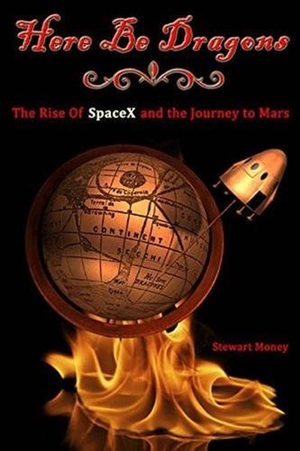Review: Here Be Dragonsby Jeff Foust
|
| Money has put together this history primarily based on publicly available information and his own analyses, which go into great detail. |
All of those activities should provide plenty of fodder for the media, and by and large it does. However, covering the company and its activities can be maddening at time for reporters. The company is often parsimonious with information about its activities: the reentry and splashdown of the Dragon on Saturday, for example, was announced by the company in a just a couple of terse social media updates. In June, there was an uproar among media and space enthusiasts when the company said it would not webcast a Falcon 9 launch attempt, citing an unfavorable weather forecast (weather did, in fact, scrub the launch, and SpaceX webcast the rescheduled launch.) Yet, Musk can often be willing to take questions from the media, to the point where his handlers have to drag him away.
Given those challenges, one better appreciates the effort that Stewart Money put into a thorough history of the company in Here Be Dragons. Money, a previous contributor to The Space Review, traces the company’s history from its origins in the early 2000s to nearly the present day (the unveiling of the company’s crewed spacecraft design, the Dragon v2, in late May of this year is the final event in the book’s epilogue.) That includes detailed information about the development of the company’s Falcon 1 and Falcon 9 launch vehicles, the Dragon cargo spacecraft, and its commercial crew work.
Money offers a thorough account of SpaceX’s rise, although it doesn’t contain any real behind-the-scenes accounts of the company’s challenges and achievements. Instead, he has put together this history primarily based on publicly available information and his own analyses, which go into great detail. For example, he dives deep into technical discussions of issues such as the design of the Merlin engines used on the Falcon 9, or the milestones SpaceX has to achieve on its Commercial Orbital Transportation Services (COTS) agreement with NASA that supported the development of its cargo transportation system.
It’s not all detailed technical information: Money does have a little bit of fun with his subjects. “In winning a share of the initial COTS award,” he writes, “SpaceX was somewhat in the position of the high school geek who scored an improbable date with the homecoming queen; it might turn out okay, but it could be a life altering, embarrassing disaster, played out on a very public stage.” So far, it seems to have turned out “okay” for SpaceX, and for NASA.
| “In winning a share of the initial COTS award,” he writes, “SpaceX was somewhat in the position of the high school geek who scored an improbable date with the homecoming queen.” |
What undermines Here Be Dragons, though, is not its content so much as its presentation. The book’s text is laid out in a small font with narrow spacing, giving it a dense, uninviting look to someone skimming its pages. The publisher also did not do a good job copyediting the book, resulting in numerous typos and inconsistencies in the text. Those issues detract from the book despite the quality of its content.
If you are willing to get past those presentation issues, Here Be Dragons does offer perhaps the best one-volume history of SpaceX to date. Short of getting inside a real behind-the-scenes account of the company’s triumphs and tribulations, it allows the reader to trace its rise and help understand why its efforts are so compelling—if, sometimes, a little frustrating to follow.
